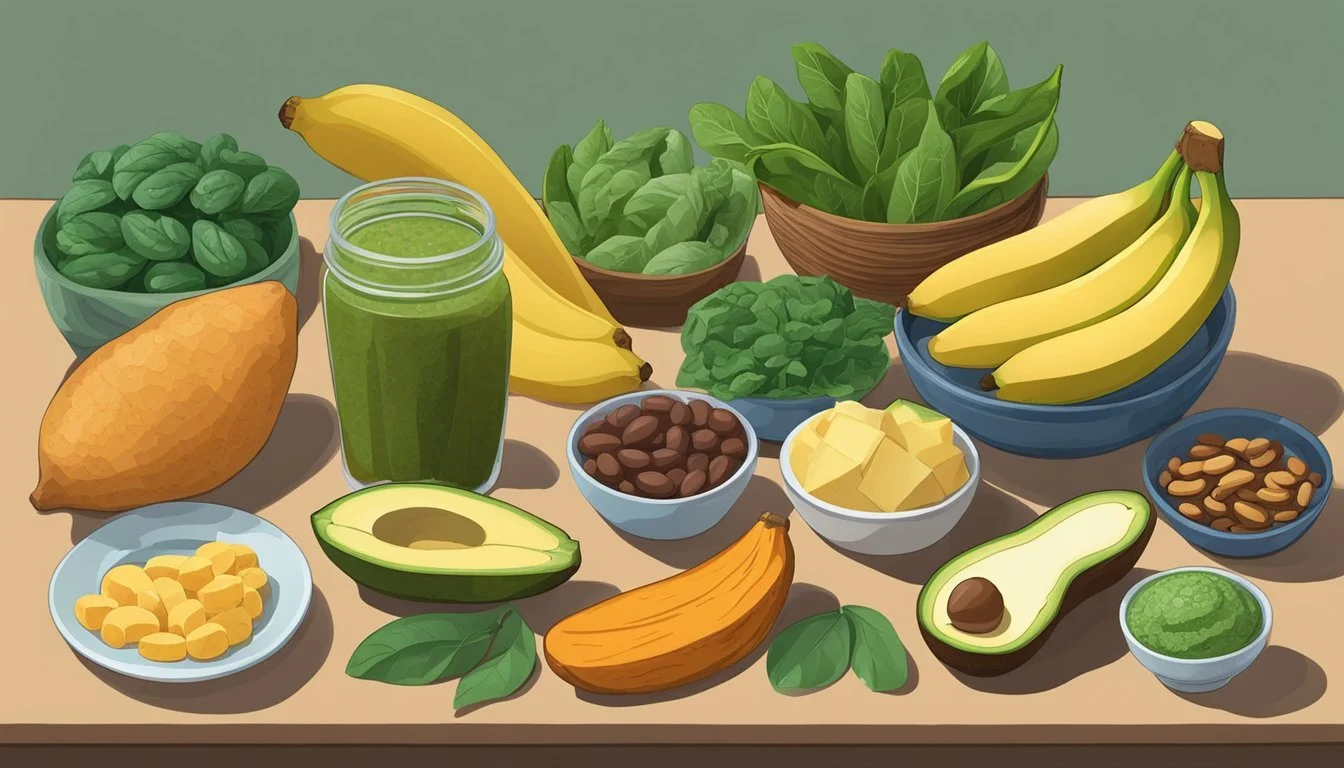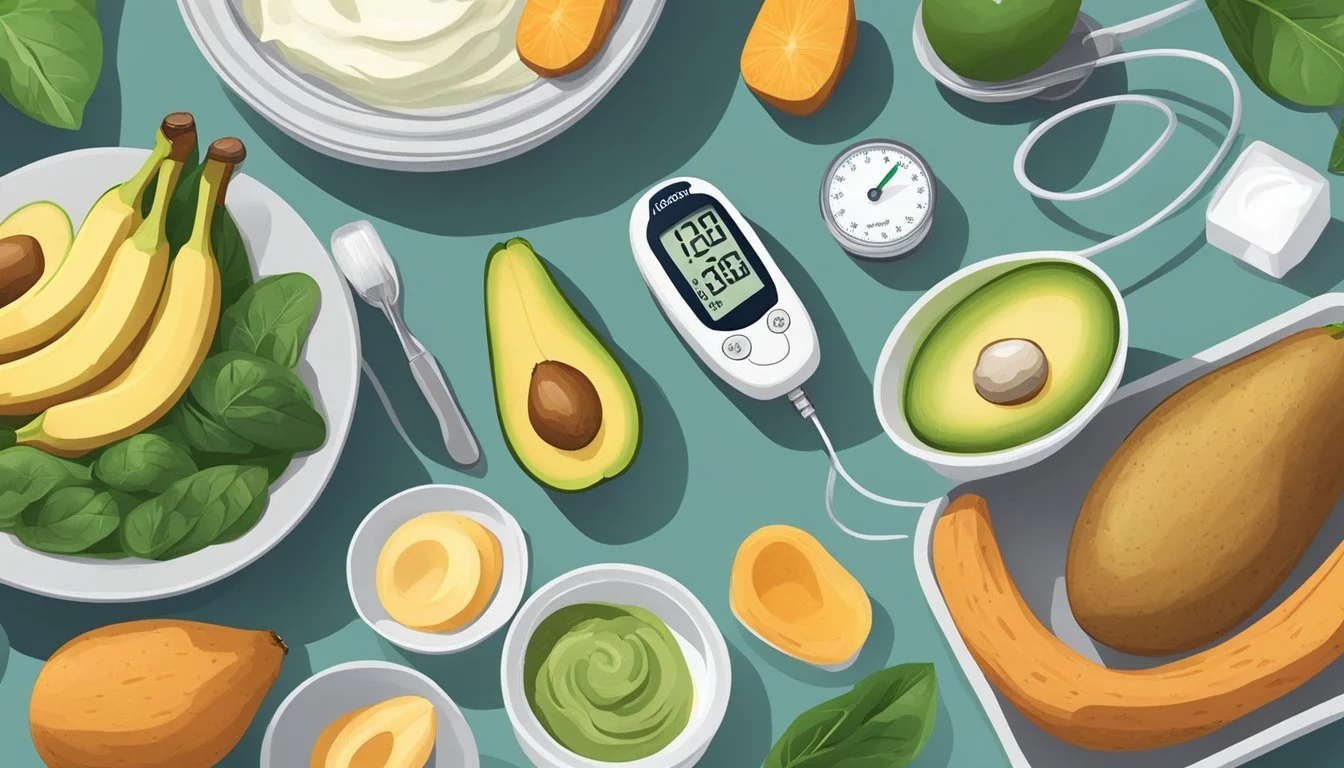What Are Some Good Sources of Potassium for Managing Hypertension?
Unveiling Heart-Healthy Foods
Potassium plays a vital role in managing hypertension, commonly known as high blood pressure. This essential mineral helps to balance the amount of sodium in the body and can improve the function of blood vessel walls, contributing to a reduction in blood pressure levels. For those with hypertension, increasing dietary potassium is often recommended because of its ability to counteract the effects of sodium and help the kidneys to remove more sodium through urine, leading to lower blood pressure.
Foods rich in potassium are a key component of the dietary approach to stop hypertension. The mineral aids in the proper function of the heart and muscles and is essential for maintaining electrolyte and fluid balance in the body. Adults with blood pressure readings above the healthy range are generally advised to enhance their potassium intake, provided there are no conditions such as kidney disease that contraindicate high levels of potassium consumption.
Incorporating potassium into one's diet can be achieved through the consumption of a variety of foods. Fruits and vegetables, such as bananas, oranges, spinach, and sweet potatoes, are excellent sources of potassium. Other potassium-rich foods include fish, chicken, beef, beans, milk, yogurt, and some dried fruits. Regularly including these foods in one's diet can contribute to the control of hypertension and promote overall cardiovascular health.
Understanding Hypertension
Hypertension, commonly known as high blood pressure, poses significant health risks if not managed effectively. Potassium plays a critical role in blood pressure regulation, and understanding its balance with sodium can aid in controlling hypertension.
The Role of Potassium in Blood Pressure Regulation
Potassium is essential for maintaining normal blood pressure levels. It modulates vascular smooth muscle function and influences how blood vessels dilate and constrict. Additionally, potassium aids the kidneys in excreting excess sodium, a known contributor to high blood pressure.
Consequences of High Blood Pressure
Having high blood pressure, or hypertension, puts individuals at risk for numerous health conditions. The strain on blood vessels can lead to damage over time, potentially resulting in heart disease or stroke. Hypertension is also linked to the development of kidney disease due to the kidneys' role in blood pressure regulation.
Potassium vs. Sodium Balance for Hypertension Control
The delicate balance between potassium and sodium is vital for hypertension control. While sodium increases blood pressure by causing fluid retention and constriction of the blood vessels, potassium has the opposite effect, helping to relax blood vessel walls and promote excretion of sodium. Managing the intake of these minerals is crucial for individuals with high blood pressure.
Dietary Sources of Potassium
Potassium is an essential nutrient that helps regulate blood pressure, and a balanced diet rich in potassium can support hypertension management. The following subsections outline specific fruits, vegetables, and other foods that are excellent sources of dietary potassium.
Fruits Rich in Potassium
Some fruits are particularly rich in potassium, contributing significantly to the daily recommended intake.
Avocados: Half an avocado contains substantial potassium content.
Grapefruit: This citrus fruit offers potassium along with vitamin C.
Cantaloupe: A sweet choice that provides both hydration and potassium.
Bananas: Often recognized for their potassium content.
Dates: These sweet fruits are a concentrated source of potassium.
Raisins: Dried fruits like raisins can be potassium-dense snacks.
Vegetables High in Potassium
Vegetables are essential components of a potassium-rich diet, particularly for those managing hypertension.
Sweet Potatoes: A versatile vegetable that contains a high amount of potassium.
Potatoes: When baked, they are an excellent source; their skins are particularly high in potassium.
Greens: Leafy greens such as spinach offer a good dose of the mineral.
Mushrooms: Various mushroom types contribute to potassium intake.
Peas: These small vegetables are not only nutritious but also have a good potassium level.
Legumes and Other Potassium-Rich Foods
Legumes and certain other foods are also excellent sources of dietary potassium.
Beans: White beans and lima beans stand out for their high potassium content.
Lentils: These are not only rich in protein but also in potassium.
Yogurt: Dairy products like yogurt can contribute to daily potassium needs.
Fish: Varieties like salmon and mackerel are good potassium sources.
Nuts and Seeds: Almonds, sunflower seeds, and others include appreciable potassium amounts.
Integrating these foods into one’s diet can help meet potassium requirements for those especially concerned with managing hypertension.
Incorporating Potassium into the Diet
Managing hypertension involves a multifaceted approach, and diet plays a critical role. One key aspect of a heart-healthy diet is adequate potassium intake, which can help mitigate the negative effects of sodium on blood pressure.
Recommended Daily Intake of Potassium
Adults require a certain amount of dietary potassium to maintain optimal health. The American Heart Association suggests most women should aim for 2,600 milligrams per day, while men should target 3,400 milligrams per day. However, average consumption often falls short, with men usually consuming around 3,000 mg and women about 2,300 mg per day.
Creating a Heart-Healthy Diet Plan
Embracing a heart-healthy diet such as the DASH (Dietary Approaches to Stop Hypertension) diet lays the groundwork for managing hypertension. The DASH diet emphasizes:
Increased intake of fruits and vegetables
Choosing dairy foods that are low in fat
Selecting fish several times a week
Reducing saturated fat and overall fat intake
Incorporating foods high in potassium can also involve the use of salt substitutes, but individuals should seek medical advice before using them, especially those with kidney issues.
Natural Sources vs. Supplements
While potassium supplements are available, nutritionists typically recommend obtaining nutrients from natural sources for better health outcomes. Notable sources of potassium include, but are not limited to:
Fruits: bananas, oranges, apricots, and honeydew melon
Vegetables: tomatoes, spinach
Dairy: milk and yogurt
Fish: halibut and tuna
Others: black strap molasses and prunes
Choosing these natural foods can also provide additional beneficial nutrients and contribute to overall dietary balance.
Lifestyle Factors Affecting Blood Pressure
Managing hypertension effectively involves a combination of healthy lifestyle choices. Incorporating regular physical activity, maintaining a healthy weight, reducing stress levels, and moderating alcohol and tobacco use are critical steps in blood pressure management.
Exercise and Physical Activity
Regular physical activity is crucial for keeping blood pressure within a healthy range. Adults should aim for at least 150 minutes of moderate-intensity aerobic exercise, such as brisk walking, cycling, or swimming, per week. This can lower systolic blood pressure by an average of 4 to 9 millimeters of mercury (mm Hg).
Weight Management
Maintaining a healthy weight is one of the most effective lifestyle changes for controlling blood pressure. Every kilogram of weight loss may reduce systolic blood pressure by approximately 1 mm Hg. A combination of diet and exercise helps manage weight effectively.
Stress Reduction
Chronic stress may contribute to higher blood pressure. Encouraging stress-reducing activities such as meditation, deep breathing exercises, or yoga can help manage stress levels, potentially aiding in blood pressure control.
Limiting Alcohol and Quitting Smoking
Alcohol can raise blood pressure, so limiting intake to moderate levels is advisable. For men, this means up to two drinks per day, and for women, up to one drink per day. Smoking elevates blood pressure and harms the cardiovascular system. Therefore, quitting smoking is strongly recommended to reduce the risk of hypertension and improve overall health.
Medical Management of Hypertension
In managing hypertension effectively, it is crucial to determine the appropriate time to begin medication, understand the various classes of blood pressure medications, and monitor as well as adjust potassium intake when on these medications.
When to Consider Medication
Once a diagnosis of hypertension is confirmed—often after ruling out "white coat hypertension" by using a blood pressure log—a health care professional may prescribe medication. This step is usually taken when lifestyle changes alone do not sufficiently lower blood pressure. The decision to start medication will also depend on the presence of other risk factors such as high cholesterol levels or the patient's overall risk of cardiovascular disease.
Different Classes of Blood Pressure Medications
Several classes of blood pressure medications are available to treat hypertension. The choice of medication is individualized based on the patient's overall health profile and specific needs:
ACE Inhibitors: Angiotensin-converting enzyme inhibitors work by relaxing blood vessels.
Angiotensin II Receptor Blockers (ARBs): These medications block the action of angiotensin II, which narrows blood vessels.
Calcium Channel Blockers: These drugs lower blood pressure by preventing calcium from entering cells of the heart and arteries.
Diuretics: Commonly referred to as "water pills," diuretics help kidneys flush excess water and salt from the body.
Note: Patients with comorbid conditions such as diabetes might receive an ACE inhibitor or ARB as these medications protect the kidneys from further damage.
Monitoring and Adjusting Potassium Intake with Medication
Potassium levels are a critical consideration for patients on hypertension medication. Health care professionals will monitor potassium intake and levels diligently:
ACE Inhibitors and ARBs: Risk of hyperkalemia (elevated potassium levels) can increase, necessitating regular blood tests.
Diuretics: These can lead to lower potassium levels, and in such cases, a health care professional may advise foods or supplements to increase potassium intake.
Symptoms of hyperkalemia include nausea, vomiting, irregular pulse, shortness of breath, chest pain, and fainting. If any of these are present, it is important for the patient to seek medical attention promptly.
Possible Complications
Incorporating potassium into the diet for hypertension management can lead to significant health improvements, yet one must be vigilant about potential complications, particularly with regards to potassium levels and kidney function.
Hyperkalemia and Its Symptoms
Excessive potassium intake can result in hyperkalemia, a condition characterized by abnormally high potassium levels in the blood, which can be hazardous. Symptoms include:
Irregular pulse
Shortness of breath
Chest pain
Fainting
If not promptly addressed, hyperkalemia may lead to severe cardiac complications.
Long-Term Risks of Unmanaged Hypertension
Uncontrolled high blood pressure may cause chronic health conditions such as:
Heart disease, culminating in heart attack or heart failure
Kidney damage, possibly evolving into kidney disease
Stroke, due to increased strain on the brain's blood vessels
Vision loss, from damaged blood vessels in the eyes
Managing sodium intake, alongside careful monitoring of blood pressure, is critical in mitigating these risks.
Kidney Health and Blood Pressure
The kidneys play a pivotal role in blood pressure regulation through sodium and fluid balance. Hypertension can strain the kidneys leading to kidney disease. Conversely, kidney issues can exacerbate hypertension, creating a detrimental cycle. Maintaining optimal levels of potassium can support kidney health, but must be balanced to prevent hyperkalemia, especially in those with existing kidney conditions.
Preventative Measures and Early Intervention
Preventative measures and early intervention are critical strategies in managing hypertension. These strategies include routine monitoring of blood pressure levels, maintaining a diet rich in essential nutrients like potassium, and educating individuals on the impact of lifestyle choices on blood pressure.
Routine Blood Pressure Checks
Regular monitoring of systolic blood pressure is vital in preventing and controlling hypertension. Checks provide early detection of elevated levels, allowing for timely intervention. Adults should have their blood pressure measured by a healthcare provider at least once a year, and more frequently if they have a history of high blood pressure or are at an increased risk for cardiovascular disease.
The Importance of a Well-Balanced Diet
A well-balanced diet plays a pivotal role in the prevention of hypertension and in sustaining a healthy lifestyle. Diets high in potassium, found in fruits like nectarines and kiwis, can help lower blood pressure. Potassium counteracts the effects of sodium and eases tension in the blood vessel walls. Foods rich in calcium and low in sugar and cholesterol also contribute to better blood pressure management.
Foods high in potassium:
Nectarines
Kiwi
Bananas
Oranges
Spinach
Sweet potatoes
Incorporating these foods into daily meals can help manage and prevent high blood pressure.
Education on Lifestyle and Dietary Habits
Educating individuals on the impact of diet and lifestyle on blood pressure can lead to more informed choices. Reducing intake of high-sodium foods and avoiding excessive sugar consumption are essential dietary adjustments. Regular physical activity, maintaining a healthy weight, and managing stress levels complement a healthy diet in preventing hypertension. Knowledge about how certain foods, such as those containing potassium and calcium, affect hypertension is critical for early intervention and management.







